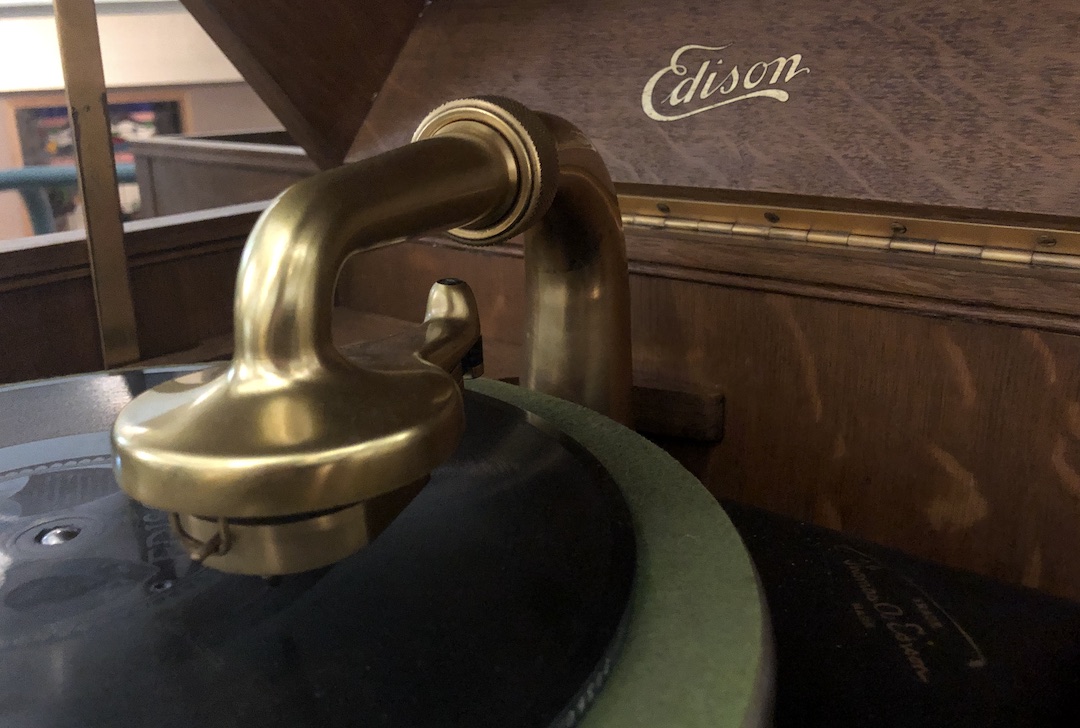[/et_pb_dp_dmb_module_508]

Whatever you called it— phonograph, gramophone, record player— they were a staple at camps on the Lake of the Woods for nearly half a century. These simple and elegant machines provided entertainment, comfort, and company, all without needing electricity from the turn of the 20th century into the 1950s and beyond.
Before radio, the phonograph was king and the only way to hear music that wasn’t performed live. The first radio stations began broadcasting in this area in the early 1920s.
Thomas Edison invented a method to record sound on wax cylinders in 1877 and Emile Berliner invented the record that we are more familiar with today in 1887. The two men would go on to found rival companies, Edison Records and Victor Talking Machine Company. On display here are some examples of both Edison and Victor products.
Did you know?
Early phonographs were powered with wind up springs and not electricity. There was no volume control. In order to lower the volume on a phonograph one would roll up a wool sock and stick in the speaker to dampen the noise.
That is where the expression, “Put a sock in it!” comes from.
Did you know?
During the Second World War German prisoners of war were brought to the Lake of the Woods area to cut wood for the local mills. Many of the prisoners enjoyed their time in the Canadian wilderness, and a number of them immigrated to Canada when the war ended.
